There are 18 popular types of engineering, which we’ll explore while answering four burning questions with added tidbits:
- Is engineering the right career for me?
- Which field of engineering suits me best?
- What do engineers actually do?
- What are the subfields for each type of engineering?
Now, there are countless subfields in each engineering field, so it’s impossible to explore them all. Instead, I’ll take you on a whirlwind tour of what I believe are the 18 main types of engineering and zoom in on some essential subfields.
You might notice some overlaps between these 18 types of engineering, and opinions on how they relate to each other may vary. But hey, the goal here is to help you uncover the fascinating world of engineering, regardless of personal views.
Use the table of contents to jump to any field that interests you, or scroll down to uncover each field one by one.
Table of Contents
#1 Aerospace Engineering

“Boldly go where no one has gone before” – this iconic quote from the beloved Star Trek TV series perfectly captures the essence of the aerospace industry.
Aerospace engineering is all about designing and building mind-blowing machines that can soar through Earth’s atmosphere and beyond, including planes, jets, helicopters, drones, rockets, spaceships, satellites, and missiles. Aerospace engineers tackle the challenge of defying gravity with their designs, exploring the great unknown.
Thanks to their genius, we can now zip from America to Europe in less than 10 hours – a far cry from the six weeks it once took to sail across treacherous oceans!
And let’s not forget, aerospace engineers can proudly call themselves “rocket scientists”!
Aerospace engineering subfields:
- Aeronautical engineering: Crafting aircraft that fly within Earth’s atmosphere, like airplanes, jets, gliders, and helicopters.
- Astronautical engineering: Designing spacefaring vessels for organizations like NASA and SpaceX.
Cool jobs:
- Aircraft design: Creating bigger, faster, more efficient, and safer commercial planes.
- Private space tourism: Dreaming up future space tourist hotspots.
- Rocket and spaceship design: Designing spacecraft to jet off to Mars and the Moon.
- Military aerospace engineer: Developing cutting-edge weapon tech for national defense and protecting Earth from menacing asteroids.
- Pilot or crew of aircraft and spacecraft: Steering these magnificent machines in real-time.
Amazing accomplishments:
- Moon landing: Neil Armstrong’s safe voyage to and from the moon with 1960s technology.
- Sound barrier: Humans conquered this feat in the 1940s with a 7,000-pound aircraft.
- Aircraft: Flying in metal tubes across oceans in style and comfort.
- Rockets vertically landing: SpaceX sticks the landing and reuses rockets for new missions.
Future pursuits:
- Electric planes: Designing aircraft powered by electric motors.
- Voyage to Mars: Transporting humans to Mars.
- Faster planes: Slicing a 12-hour flight in half.
- Solar aircraft: Creating solar-powered commercial aircraft.
- Scaling space tourism: Making out-of-this-world trips affordable for everyone.
- Space exploration: Embarking on human voyages to the far reaches of the solar system.
#2 Agricultural Engineering

Feeding the ever-growing human population isn’t as simple as planting a seed and crossing our fingers anymore. We need to get creative, innovative, and, well, a little bit sci-fi.
Imagine state-of-the-art tractors zipping through cornfields like mechanical insects on a mission. That’s where agricultural engineers come in, working their magic to transform farms into efficient, high-tech hubs of food production. They design and set up farming equipment, optimize layouts, and create new management styles.
With the climate changing, agricultural engineers have their work cut out for them. They’re tackling the challenge of recreating ideal crop environments to maintain high yields and stave off hunger. They’re doing this by considering factors like water runoff patterns on fields and airflow paths in barns.
I’m confident that agricultural engineering will make significant strides in the face of climate change to safeguard our farmers, the unsung heroes of our economies.
Cool jobs:
- Machine design: Crafting autonomous farming machines of the future.
- Farm layouts: Designing layouts that shield crops from the elements and pesky insects.
- Application engineer: Upgrading existing farms with cutting-edge practices and technology.
Amazing accomplishments:
- Irrigation advancements: Using less water without sacrificing crop yields.
- Machine planters: Speedy, large-scale precision planting.
- GPS and sensors: Harnessing GPS receivers and sensors to optimize farm management. This enables automatic delivery of water, fertilizer, and pesticide when needed.
- Vertical farming: Stacking crops in controlled environments to ramp up food production for our growing numbers.
Future pursuits:
- Smart machines: Developing autonomous machines to farm our lands.
- Pollution control: Lowering pollution without compromising crop yields.
- Increasing crop yields: Employing robots, aerial imagery, sensors, and GPS.
- Artificial environments: Combatting climate change with larger agricultural structures and storage facilities.
- Livestock data: Enhancing livestock health by collecting real-time data.
- Selective breeding: Breeding animals resilient to new environments.
- Manmade closed ecological systems: Recycling every aspect of crop ecosystems.
#3 Audio Engineering

I’m a music lover myself, but I’ll admit I hardly ever think about the nitty-gritty of sound production. I mean, who does?
Enter audio engineers. They’re responsible for the recording, mixing, and reproducing of sound—think high-tech maestros in a digital world.
Remember the last concert you went to? The sound was crystal clear, even over the roar of thousands of enthusiastic fans.
My point is, sound production is way more intricate than just cranking up the volume or hitting the record button.
Cool jobs:
- Movie audio design engineers: Crafting the audio for blockbuster films.
- Video game audio: Conjuring sound effects for our favorite video games.
- Live sound engineer: Balancing sound at live events for performers and audiences alike.
- Studio sound engineer: Fine-tuning music for chart-topping albums.
Amazing accomplishments:
- Wireless headsets: Tiny wireless headphones delivering mind-blowing sound quality.
- Surround sound: Bringing the cinema experience to your living room.
Future pursuits:
- Microdevices: Packing high-resolution sound into minuscule devices.
- Music streaming: Enhancing sound quality for streaming tunes.
- Talk technology: Refining voice recognition in vehicles.
- Wireless technology: Expanding the range and quality of wireless tech.
- Concert equipment: Crafting lighter, smaller, and more powerful audio systems for live shows.
- Video game audio: Infusing games with hyper-realistic sound effects.
- Bone conduction technology: Jamming to tunes through the bones in your skull.
- How we perceive sound: Perfecting acoustics for better privacy, like sound dampening in office spaces.
#4 Bioengineering
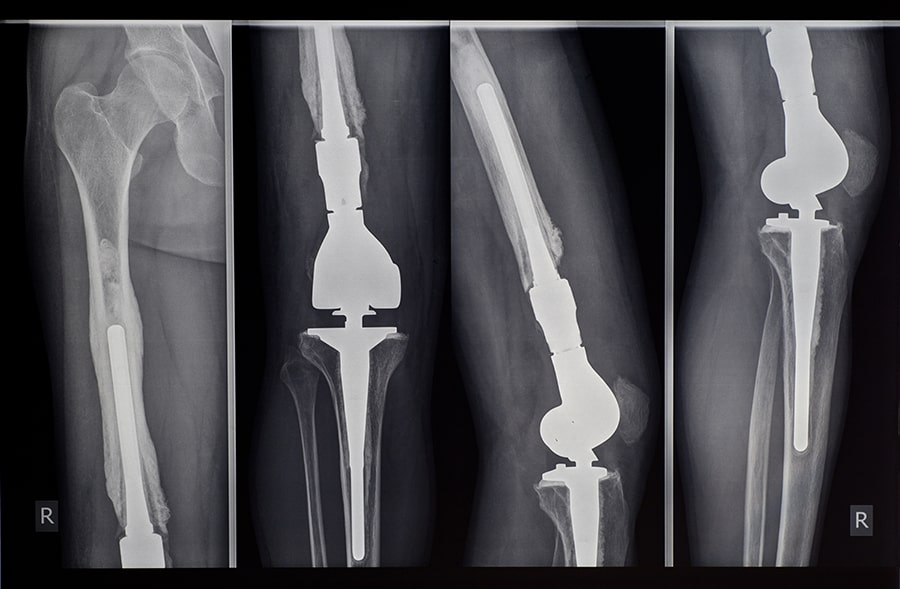
“Bio” means life in Greek, and bioengineering is all about designing and building around life itself.
I’ve always been captivated by the fusion of man and machine, like what we see in movies. Although bioengineers might not be crafting deadly terminators, their work is genuinely life-changing. They’re pushing the boundaries in prosthetics, medical devices, drug delivery, gene modification, healing promotion, and helping amputees walk again.
Next time you’re at the doctor’s office, take a moment to look around at the equipment and medical procedures. Access to cutting-edge technology is essential for top-notch treatment. In fact, I’d argue that engineering has played a more significant role in improving human health than even doctors.
But bioengineering isn’t limited to the medical field—it also encompasses plants and tiny organisms. Think about the GMO label on many foods we eat. Bioengineers use enzymes and living cells to create genetically modified organisms that can’t be produced through regular breeding or found in nature.
Cool jobs:
- Biomechanics engineer: Crafting products for the human body like artificial heart valves and joint replacements.
- Genetic engineering: Fixing gene defects.
- Medical imaging: Designing devices to peer inside the human body, like X-rays.
Amazing accomplishments:
- Wearable tech: Devices that integrate with the human body, like real-time glucose monitors for type 1 diabetics.
- X-ray machines: Standardizing X-ray usage in hospitals.
- Nanotechnology: Treating and eradicating diseases, disabilities, and illnesses on a microscopic level.
- Robot surgeons: Performing surgical procedures with robotic precision.
Future pursuits:
- Tissue restoration: Creating artificial skin and cartilage to benefit high-flying athletes like Zion Williamson.
- Body implants: Developing implants that don’t require a lifetime supply of anti-rejection pills.
- Nanorobots: Battling diseases locally by delivering drugs and heat to specific areas in the body.
- 3D printing: Printing human organs with biomaterials.
- Prosthetics: Advancing prosthetics for the bionic humans of the future.
- Brain-machine interface: Uploading data from machines to human brains and vice versa.
- Genome editing: Removing harmful genes and adding beneficial ones.
- Robotic exoskeletons: Aiding the ill and elderly with added strength and enhancing human performance in labor-intensive jobs.
- Medical imaging: Refining medical imaging visuals for greater accuracy in image-guided surgeries.
- Bionic humans: Amplifying human performance, like increasing the average human running speed.
#5 Chemical Engineering

It’s no secret that synthetic materials rule our modern world. Just look at your car, TV, iPhone, basketball, and more. But these materials didn’t just spring up from the ground—they were created in a lab by chemical engineers.
These engineers tinker with chemicals and chemical processes to whip up new raw materials for a range of products. They also refine existing materials, making them stronger, lighter, cheaper, and eco-friendly.
Every material-related frustration we’ve ever had becomes a future project for these engineers. Think weak tool handles that snap easily, phone screens that shatter at the slightest mishap, or kitchen gloves that can’t handle the heat.
Cool jobs:
- Semiconductors: Testing and manufacturing materials for computer chips and electronics.
- Food: Tweaking the physical properties of food, like color, smell, texture, and taste.
- Oil refinery: Turning extracted oil into usable fuel.
- Biotech: Developing groundbreaking drugs for the healthcare sector.
- Product material improvements: Making products stronger, lighter, cheaper, and safer.
Amazing accomplishments:
- Safe drinking water: Crafting efficient water treatment processes for crystal-clear drinking water.
- Healthcare: Churning out life-saving medications and medical devices like penicillin, sunscreen, bioengineered tissue, and eye lenses.
- Plastics: Harnessing plastic in various industries to make superior products.
- Fertilizers: Supplying essential nutrients for crops to thrive in harsh climates.
- Pesticides: Shielding plants from pesky insects and small organisms.
- Fossil fuel refinement: Creating eco-friendly fuel for machines.
- Computer chips: Employing silicon for semiconductor devices.
Future pursuits:
- Pollution control: Developing recyclable products that keep pollution at bay during the manufacturing process.
- Better battery tech: Prolonging battery life and crafting batteries that are safer and lighter.
- Cell and tissue repair: Innovating new skin, cartilage, and other tissues for humans.
- Nanotechnology: Enhancing nanotech to push medicine, computers, and other fields forward.
- Food: Refining food processing to nourish growing populations.
- Purifying water: Scaling water treatment to quench the thirst of growing population demands.
- Renewing civic infrastructure: Using high-strength compounds that can regenerate, like self-healing concrete.
- New fuel sources: Making air and space travel more affordable and cleaner.
- Recycling nuclear fuel: Converting bomb-grade uranium from missile warheads into low-enriched uranium for nuclear plants.
- Fighting climate change: Boosting green energy systems and rebuilding damaged ecosystems.
#6 Civil Engineering

Next time you’re cruising through any city, take a gander around. You’ll spot roads, bridges, skyscrapers, subways, homes, stadiums, and more—all designed by civil engineers, not just in modern times but for centuries.
Civil engineering is one of the oldest engineering branches, dating back to when people first altered their environment to suit their needs. It’s a no-brainer that without city infrastructure, other engineering forms wouldn’t exist.
We need shelter and transportation before we can unleash our creative and innovative powers.
Different Subfields of Civil Engineering
- Construction: Managing construction projects for design and code compliance.
- Geotechnical: Analyzing earth materials like soils and rocks to help other engineers design better tunnels, mines, and structural foundations.
- Structural: Crafting foundations for structures.
- Transportation & Traffic: Designing highways, railways, airfields, and other transportation structures. Also, creating traffic lights.
- Water resources: Enhancing freshwater quality and quantity by designing water treatment and wastewater treatment plants.
Cool jobs:
- Construction management: Supervising and managing large engineering projects.
- Bridge inspector engineer: Examining existing bridges for safety and recommending repairs or improvements.
- Building demolition: Safely dismantling structures with explosives.
- Airports: Designing and constructing cutting-edge airports.
- Infrastructure planning: Mapping out new structures and layouts for cities.
Amazing accomplishments:
- Burj Khalifa: The world’s tallest building, soaring 2,716.5 feet high in Dubai. It took about 5 years and 22 million man-hours to construct.
- English Channel Tunnel: A 31-mile undersea rail tunnel connecting England and France. At its deepest point, the tunnel is 250 feet below sea level.
- Golden Gate Bridge: The iconic burnt-red bridge in San Francisco, stretching 8,981 feet long and weighing 887,000 tons, with the ocean raging below.
- Three Gorges Dam: The world’s largest power station, boasting a total capacity of 22,500 megawatts. This Chinese hydroelectric plant includes 32 main generators rated at 700 megawatts each.
- Palm Islands: The world’s largest artificial island shaped like a palm tree in Dubai. This island required over 32 million cubic meters of sand.
- Great Pyramid of Giza: Built before modern technology, this ancient wonder stands 455 feet tall with near-perfect geometric dimensions.
Future pursuits:
- Megastructures: Constructing massive structures in densely populated cities worldwide, and rehabilitating aging historic structures.
- Underground engineering: Designing and building underground structures in bustling cities, such as tunnels, subways, and underground compounds.
- Smart roads: Reconstructing streets to accommodate self-driving cars.
- 3D printing: Harnessing 3D printers to cut costs and speed up construction.
- Nanotechnology: Strengthening materials and soils with nanotech to better maintain structures.
- Virtual and augmented reality: Virtually analyzing conceptual designs before construction.
- Sustainable designs: Constructing smart buildings with sensors to reduce energy consumption and protect the environment.
#7 Computer Engineering

Computer engineering is advancing at breakneck speed, no doubt about it. Just think, your phone’s processing power is 100,000 times stronger than the computer used to send Apollo 11 to the moon in 1969!
This rapid tech advancement benefits all engineering types, both hardware and software.
Hardware engineering involves designing and developing computer components like processors, memory devices, network devices, and circuit boards.
Software engineering, on the other hand, focuses on writing computer programs for a wide range of tasks and operations. For example, we use software to manage power grids, design video games, control self-driving cars, guide robots on assembly lines, steer aircraft, and run our favorite online apps.
Cool jobs:
- Computer architecture: Designing and developing computing systems.
- Robotics: Crafting advanced robotics to create a sci-fi reality.
- Virtual Reality (VR): Enhancing VR graphics and gameplay for lifelike digital worlds.
- Electronic devices: Designing electronics for all industries and engineering types.
Amazing accomplishments:
- Microsoft Windows: The Windows operating system enabled users to run graphical programs.
- Home computer: Affordable home computers hit the public market.
- Self-driving cars: Semi-autonomous vehicles hit the streets.
- Internet: A digitally connected world emerged.
- Touch screen devices: Touch screens became integrated into user products.
- Scope of demand: All industries now depend on computers.
Future pursuits:
- Smaller and faster: Making computers tinier and speedier.
- Simplifying lives: Streamlining life through increased automation.
- Computer usage in engineering fields: Applying computers to all engineering fields.
- Quantum computers: Designing ultra-powerful computers to tackle complex problems.
- Augmented and virtual reality: Enhancing hardware to create lifelike experiences for users in entertainment and the working world.
- Nanosensors: Using nanosensors to collect data for better analysis of buildings, plants, poles, and human bodies.
- Fully autonomous vehicles: Designing completely self-driving vehicles.
#8 Electrical Engineering
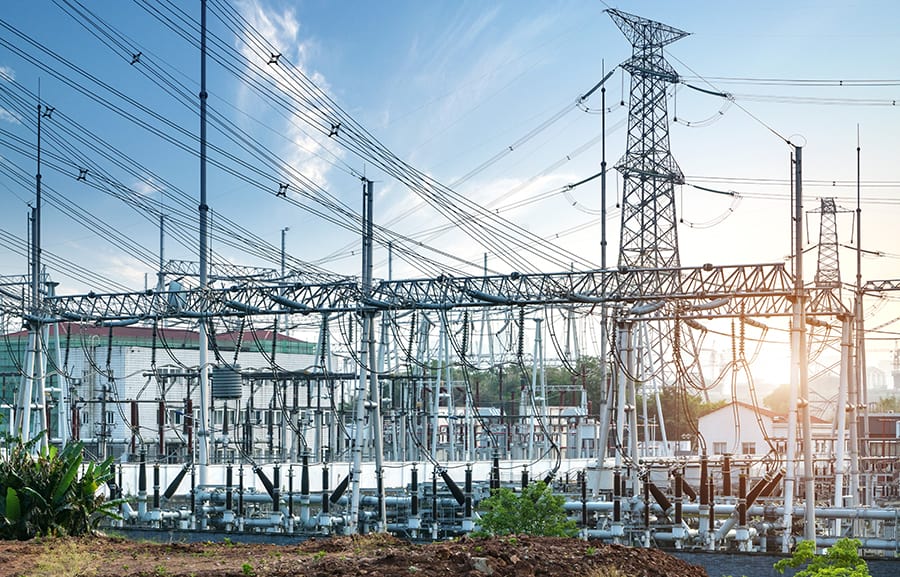
As a kid, I was captivated by Nikola Tesla and his electrifying experiments. Nowadays, it’s hard to imagine life without electricity – no lights, smartphones, internet, refrigerated food, or power. Sounds like a nightmare, right?
Electrical engineering has come a long way and now thrives with these subfields:
- Communication: Designing systems and equipment to transmit data.
- Controls: Making systems efficient and predictable.
- Electronics: Designing and developing electronic components.
- Power: Generating, transmitting, and distributing power.
Cool jobs:
- Power grid: Managing the U.S. power grid, the largest machine on Earth, and a complex yet outdated electrical system.
- Signal processing: Optimizing signals for various use cases.
- Renewable energy sources: Enhancing clean energy tech.
- Industrial automation: Aiding the transition from human labor to machine automation.
- Electronics: Designing electronics for different purposes.
Amazing accomplishments:
- Satellite communication: Satellites orbiting 22,000 miles above us at 7,000 mph.
- U.S. Power grid: The Earth’s largest machine.
- Microprocessors: The hardware making computers possible.
- Electric motors/generators: Powering electric devices and providing running water.
- Transformers: Essential for power grid operation.
Future pursuits:
- Improved power grid: Updating and repairing aging power grids.
- Advanced robotics: Boosting industry efficiency without added human labor.
- Nanotechnology: Tackling problems at a micro-level.
- Smart grids: Using smart devices with power grids to save costs and improve energy management.
- Bulk energy storage: Enhancing battery energy storage.
- Electric cars and planes: Swapping fossil fuels for batteries in transportation.
- Engine efficiency: Boosting engine efficiency.
- Renewable energy: Discovering and designing new renewable energy sources.
#9 Environmental Engineering

It’s mind-boggling how we, as a supposedly intelligent species, struggle to protect our planet. Human greed often leads to disastrous decisions that harm our environment.
Sadly, I often hear people badmouthing environmental engineers, accusing them of stalling and complicating engineering projects. But engineers need boundaries to prevent long-term damage. Even well-intentioned projects can backfire without regulation.
Fear not, environmental engineers are here to save the day! They prevent and clean up messes, using their skills to solve problems like waste disposal, public health, recycling, and pollution control.
Cool jobs:
- Air quality control: Preserving air quality as populations grow.
- Water/Wastewater: Designing dams, diversion structures, and sewer lines.
- Environmental remediation: Keeping project sites clean during and after construction.
Amazing accomplishments:
- Clean water supply: Providing fresh water to millions worldwide.
- Pollution management: Ensuring clean air and water in cities.
- Waste management: Scaling waste management systems.
Future pursuits:
- Developing countries: Extending environmental protection practices to developing countries.
- Water treatment: Designing more efficient and affordable water treatment.
- Pollution control: Adopting global pollution and waste management protocols.
- Sustainable communities: Building sustainable, self-sufficient communities.
- Renewable energy: Managing the global transition to renewable energy.
#10 Geotechnical Engineering
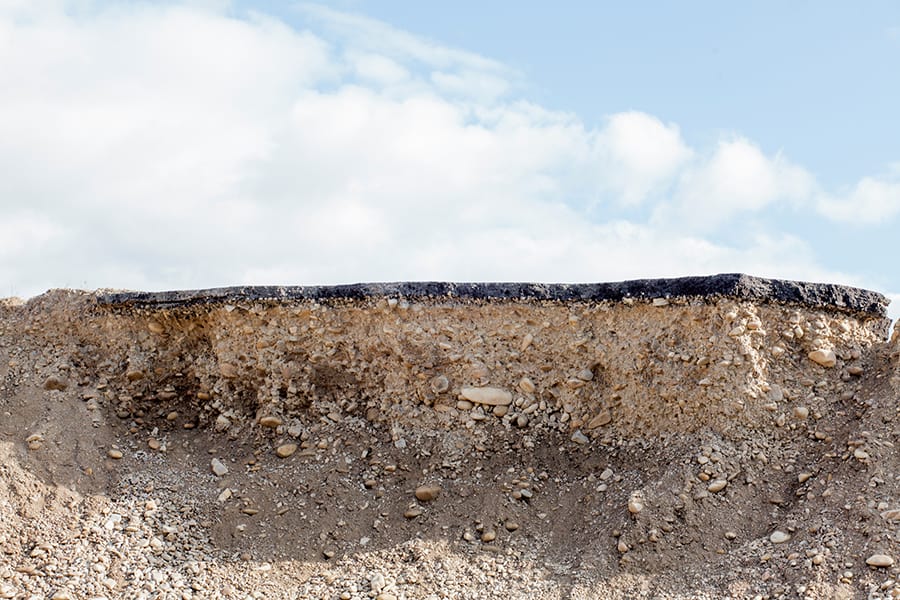
Geotechnical engineers investigate soil and rock effects on engineering projects, sharing insights with engineers who need the data for their designs.
For instance, structural engineers need soil data to build secure foundations, and I require soil information to design safe ground grids due to varying resistivities.
In a nutshell, geotechnical engineers play a crucial role in shaping numerous engineering designs.
Cool jobs:
- Concrete and asphalt testing: Testing materials for all types of engineering projects.
- Construction supervision: Overseeing projects and inspecting subsurface conditions.
- Soil inspection: Examining soil in exotic locations for innovative designs.
Amazing accomplishments:
- Bridges: Massive, lengthy bridges defying harsh environments.
- Skyscrapers: Towering skyscrapers rising in diverse settings.
- Coastal structures: Buildings in coastal areas, like ports, piers, and seawalls.
Future pursuits:
- Exotic construction areas: Surveying land in unique locations like mountains or sandy terrains atop fault zones.
- New surveying techniques: Developing cutting-edge land surveying methods.
#11 Industrial Engineering

As systems grow more complex, optimization becomes crucial for efficiency.
Long gone are the days of hand-assembling car parts. Today’s factories require seamless coordination among hundreds of workers and machines.
Take a car manufacturing plant, for example. Robots and humans collaborate like a well-oiled machine, ensuring a smooth process. All thanks to industrial engineers, who design and optimize these intricate production systems for maximum efficiency.
Cool jobs:
- Production supervisor: Enhancing any product’s production line.
Amazing accomplishments:
- Human efficiency: Boosting efficiency through machines.
- Supply chains: Streamlining global supply chains.
- Moving assembly lines: Scaling manufacturing for mass production.
Future pursuits:
- Advanced technology: Optimizing complex systems as technology progresses.
- Green sustainable future: Upgrading manufacturing to minimize pollution and conserve energy.
- AI and robots: Integrating AI and robots into all factories.
#12 Materials Engineering

Material engineers select the ideal materials for products. But beware – pick the wrong one, and you could have a plane crash!
Don’t confuse material engineers with chemical engineers. Though both involve chemistry, material engineers focus on the nitty-gritty of materials. They’re like detectives, uncovering how and why materials behave as they do.
For example, material engineers searching for the ultimate helicopter blade material are like mad scientists, concocting a secret formula for a lightweight, strong, and flexible material that’s affordable!
They also find better materials for existing products. Imagine discovering a cheaper, stronger, and lighter alternative to aluminum! They’d bid “Sayonara, aluminum!” and recommend this new material for planes, leading to lower fuel costs and safer flights.
Cool jobs:
- Metallurgy: Examining the physical and chemical behavior of metals.
- Biomedical: Researching ideal materials for medical tools.
- Product engineering: Ensuring consistent manufacturing in mass production.
Amazing accomplishments:
- Commercialization of plastic: Plastic used across industries.
- Computer chips: Silicon usage in computer chips.
- Airplane wings: Aerospace-grade aluminum wings enabling commercial flight.
- Basketball: Synthetic rubber and leather balls for sports.
- Biomedical devices: Robust, safe materials for use inside the human body.
Future pursuits:
- Advancing existing products: Testing new materials to enhance current products.
- Advancement of technology: Choosing materials for designs constrained by current materials.
- Nanomaterials: Utilizing nanomaterials to improve material specs.
#13 Mechanical Engineering
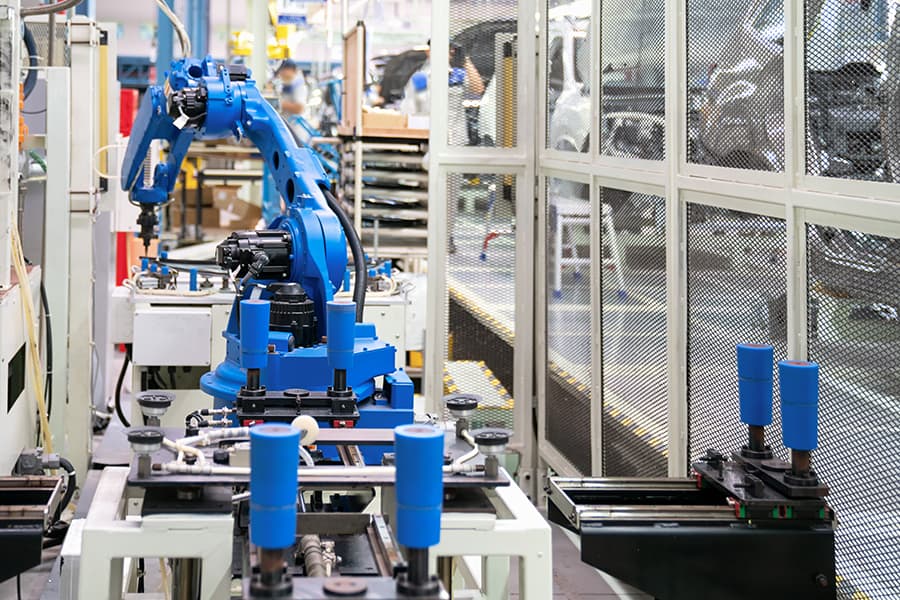
Often dubbed the ‘mother’ branch of engineering, it’s true – there’s no tech without mech!
I’ve heard this joke from mechanical engineers, but they have a point. Most technology relies on moving parts, which they design.
Leonardo da Vinci once said, “The power of water has changed more in this world than emperors or kings.” Hydraulic turbines exemplify mechanical engineering in action, converting water flow energy into electricity.
Cool jobs:
- Product design: Crafting products with all sorts of moving parts.
- Nanotechnology: Tweaking materials at the tiniest levels in food, energy, water, machinery, and environmental sectors.
- Operate and test machines and mechanical systems: Putting machines and equipment like cars, rockets, and gigantic factory robots through their paces.
- Gas and steam turbine generators: Commissioning and maintaining gas and steam turbines.
- Renewable energy: Dreaming up turbines for renewable sources, like wind and hydro.
- Space rockets and vehicles: Sketching out vehicles and equipment destined for space, such as robotics, instruments, and propulsion systems.
- Airplanes & cars: Designing the moving parts of cars and planes.
Amazing accomplishments:
- The wheel and axle: The foundation of all wheeled equipment.
- Windmills: Swapping manpower for machines while scaling up production.
- Sailing ships: Sails and oars unlocking oceans for exploration.
- Ferries & Cliff House Cable Railway Powerhouse: Constructed in 1887 in San Francisco, it’s one of the most intricate cable railway systems of its era.
- Piston: Kickstarting the industrial revolution with steam engine tech.
- Gears: Crucial components of any rotating contraption.
- Electric motor: Enabling power generation and water distribution.
Future pursuits:
- Robotics: Advancing every engineering field.
- Self-driving cars: Crafting sensors, radars, and cameras for autonomous vehicles.
- Future spaceships and rockets: Designing more efficient propulsion systems.
- Motors and generators: Developing more efficient machines.
- Renewable energy: Designing more effective renewable power sources.
- Ocean power technology: Tapping into ocean tides for power generation.
#14 Ocean / Marine Engineering

Did you know our planet is a whopping 71% ocean? And if that doesn’t make your jaw drop, consider that we’ve only explored a puny 20% of it!
We’re setting our sights on other planets, but we’ve barely dipped our toes into Earth’s oceans. That’s where ocean engineers, the fearless explorers of the sea, come in!
These ultimate problem-solvers combine water know-how with other engineering fields like electrical, civil, mechanical, acoustical, and chemical. They’re the MacGyvers of the ocean, constantly devising innovative solutions for the unique challenges of a watery world.
For instance, they design and build equipment for coastal areas and offshore work, from constructing coastal cities to drilling for oil. Their work is vital for scientists exploring and learning about our oceans – thanks to ocean engineers, we could explore the Atlantic depths and visit the Titanic, resting a mind-blowing 2.4 miles down.
Cool jobs:
- Offshore oil industry: Designing, building, and maintaining oil industry gear.
- Offshore wind farms: Pinpointing spots for wind turbine installation.
- Operation and maintenance of sea vessels: Managing operations aboard tugboats, oil tankers, and/or cruise ships.
Amazing accomplishments:
- Oceanographic instruments: Inventing oceanographic devices.
- Underwater travel: Creating vessels for scientists to dive deep into oceans.
- Discoveries: Unearthing hydrothermal vents, ocean volcanoes, underwater mountain chains, and new ocean species.
Future pursuits:
- Underwater equipment: Enhancing gear for deeper ocean adventures.
- Water pollution: Inventing gadgets to clean and protect bodies of water.
- Ocean learning: Studying ocean life to live smarter on land.
- New inventions: Making ocean mining safer and cleaner.
- Coastal structures: Safeguarding coastal structures from rising sea levels due to climate change.
#15 Mining Engineering
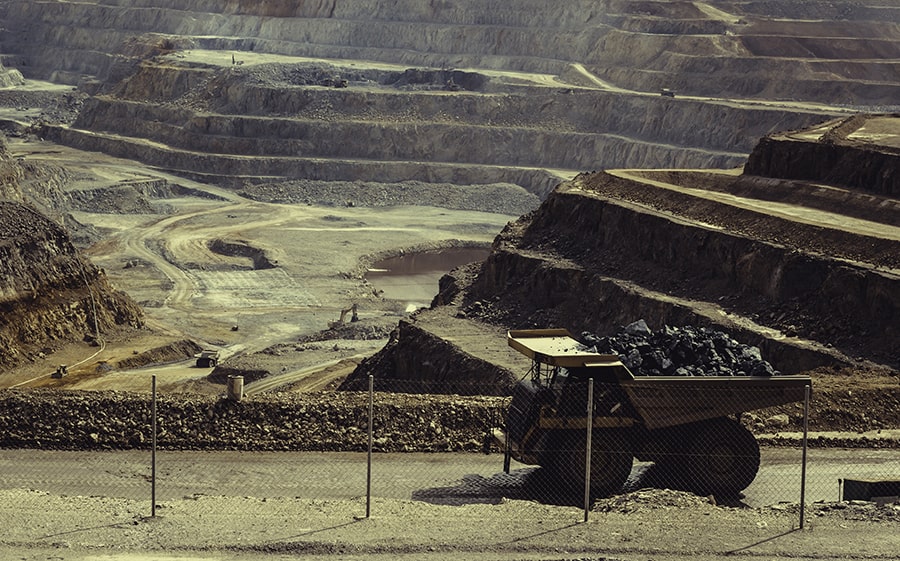
Planet Earth is packed with incredible metals and minerals, but how do we get our mitts on them? That’s where mining engineers step in!
These dauntless engineers work round the clock to extract precious metals and minerals from deep within the earth. And since each material has its unique challenges, mining engineers typically specialize in mining just one type of metal or mineral.
Their work involves a range of tasks, such as:
- Designing and testing machines
- Cooking up mining techniques
- Brainstorming processes to efficiently remove materials
- Devising methods to store excavated soil
- Checking for hazardous gases in mines
- Ensuring drilling equipment operates smoothly
- Creating and maintaining evacuation routes inside mines
- Making sure surrounding mine environments stay intact and healthy
Cool jobs:
- Mine management: Safeguarding all workers while efficiently extracting materials.
- Exploration: Hunting for mines in every nook and cranny of the globe.
- Tunneling: Designing secure tunnels while drilling into mountainsides and underground.
- Frac sand method: Employing frack sand to crack open fractures for extracting oil and gas from shale.
Amazing accomplishments:
- Mine setup: Skillful use of pumps to dewater pits and swapping black powder for dynamite to precisely and safely shatter rocks.
- Monitoring equipment: Using Geotech equipment to forecast rockslides, enabling safe mine evacuations.
- Pollution control: Reducing waste and destruction at project sites.
- Mine safety: Employing rock bolt cable bolts to reinforce deep mines.
Future pursuits:
- New mines: Delving deeper underground and further into mountainsides.
- Imaging technology: Harnessing advanced technology to locate and explore mines.
- Remote automated drilling: Drilling sans human intervention.
- Autonomous haulage systems: Utilizing autonomous trucks to haul out mined material.
- Mining processes: Boosting the yield of extracted materials, like better separating metals from rocks.
- Asteroid mining: Collecting resources from outer space.
#16 Nuclear Engineering

Nuclear power plants have gotten a bad rap over the years, but it’s not all doom and gloom. Nuclear energy is a major power source worldwide, and it doesn’t pollute the environment like burning fossil fuels does.
Thanks to the astounding work of nuclear engineers, the technology is now safer than ever – even when human error is taken into account.
Nuclear engineers focus on the sub-atomic processes of fission and fusion, which are key to unlocking boundless clean energy. Nuclear fission powers reactors and atomic bombs, while nuclear fusion powers the sun. Nuclear fusion is the holy grail of power generation, offering the potential for endless, clean energy that could revolutionize our world. It might even be the key to deep space travel.
Cool jobs:
- Managing nuclear power plants: Guaranteeing the safe and efficient operation of nuclear power plants.
- Reactor fuel/core design: Crafting safe and efficient nuclear fuel and reactor cores.
- Nuclear submarines: Designing smaller, lighter, and safer nuclear reactors for submarine use.
- National labs: Conducting research on nuclear power.
- Accident analysis: Examining potential reactor accidents and failure scenarios.
Amazing accomplishments:
- Self-sustaining nuclear reactions: Providing safe and clean power to cities.
- Nuclear-powered submarines: Building the first nuclear submarine in 1955.
- Global nuclear reactors: 430 nuclear reactors supply 13% of the world’s electricity.
- America’s clean energy: Nuclear power generates 55% of America’s clean energy.
Future pursuits:
- Fusion reactors: Designing and developing nuclear fusion reactors.
- Modular reactors: Creating smaller and more flexible nuclear reactors to power remote and isolated areas.
- Safety improvements: Enhancing the safety of existing nuclear reactors with better safety systems.
- Nuclear transportation: Exploring the use of nuclear reactors in vehicles beyond submarines and aircraft carriers.
- Waste management: Upgrading protocols for nuclear waste treatment and finding safe uses for radioactive waste.
#17 Petroleum Engineering

Remember when petroleum engineering was the hot profession? Yeah, times have changed. Renewable energy is stealing the spotlight, and people are becoming more conscious about pollution and climate change.
But let’s face it, we can’t totally ignore fossil fuels yet. They still pack a punch with their high net energy yield, making them ideal for many applications.
So, petroleum engineers still play a huge role in society. They work on hydrocarbon production, finding and safely extracting crude oil or natural gas from deep within the Earth. Thanks to them, we can meet our energy needs while transitioning to a greener future.
Cool jobs:
- Reservoir engineer: Assessing reservoirs and figuring out the best extraction methods.
- Production engineer: Drilling into reservoirs safely and effectively, then sealing them up tight to avoid leakage.
Amazing accomplishments:
- Pollution control: Drilling and extracting resources with minimal pollution.
- Locating resources underground: Finding oil and gas reservoirs all around the globe.
- Ocean drilling: Drilling over a mile below the ocean surface.
Future pursuits:
- Deep drilling: Going deeper into Earth for oil and gas.
- Clean drilling: Cutting down on drilling costs and pollution.
- New industry: Bringing petroleum engineering technology to new industries.
#18 Software Engineering

We live in a world ruled by software giants. Can you even picture life without Facebook, Apple, Google, or Amazon? Yeah, me neither.
But software isn’t just crucial for these big players. Every industry and type of engineering relies on software in some way. And it’s the software engineers who make the magic happen by writing the code that tells computers what to do.
The coolest thing about software? It automates tasks that we humans normally do, making processes more efficient. And it doesn’t stop at the apps we use daily; tons of software runs behind the scenes, keeping everything in check.
Take Microsoft Windows, for example. Windows 10 consists of a mind-blowing 50 million lines of code!
Cool jobs:
- Artificial intelligence (AI): Building the future with cutting-edge intelligence.
- Automation: Making our lives easier by automating human tasks.
- Blockchain developer: Crafting blockchain systems and protocols.
- Software security: Beefing up software security across industries.
Amazing accomplishments:
- Software revolution: Modernizing every industry through software.
- Microsoft Windows: Bringing computers to the masses.
- AlphaGo: A computer program that defeated a pro-human Go player in 2015.
- Self-driving cars: Putting semi-autonomous cars on our roads.
Future pursuits:
- Advancing AI: Infusing AI into all industries.
- Advancing AR: Making work simpler through augmented reality.
- Advancing VR: Creating lifelike digital environments.
- IoT: Designing smart hardware and processes.
- Blockchain: Enhancing blockchain technology for widespread adoption.
- Global software adoption: Making software accessible to everyone, everywhere.
- Visual programming: Opening up programming to a wider audience by making it more visual.
Wrap up Over the 18 Types of Engineering
I hope you’ve learned something about these incredible types of engineering and got a taste of what it takes to become an engineer.
Engineers of all stripes are shaping the world we live in, both directly and indirectly.
So, whether you’re eyeing a career in engineering or just have a passion for the field, there are loads of options waiting for you.
Which types of engineering most interest you? Which do you think will advance the most in the next 100 years? And can you envision any new types of engineering in the future?
